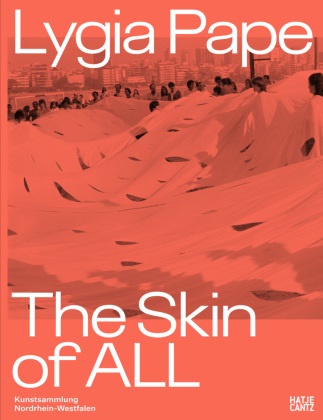Read more
Lygia Pape war eine der zentralen Protagonist*innen der neokonkreten Kunst Brasiliens. Die umfangreiche Publikation anlässlich der ersten großen Einzelausstellung der Künstlerin in Deutschland stellt die ungewöhnliche Schaffenskraft Papes in ihrer ganzen Breite sowie anhand erstmals veröffentlichter Dokumente aus dem Archiv der Künstlerin vor. Papes Werk erstreckt sich über fünf Jahrzehnte hinweg innerhalb eines Spannungsfelds von zwei repressiven Diktaturperioden (1937-1945 und 1964-1985) und einer fruchtbaren kulturellen und wirtschaftlichen Aufbruchsphase Brasiliens. In diesem Klima entwickelte Pape ihr spezifisches künstlerisches Verständnis, das eine abstrakt-konkrete Formensprache wie experimentelle Erkundungen des Raumes oder poetische Manifestationen subtilen Widerstands einschließt. Neben ethischen und gesellschaftspolitischen Fragestellungen machte sie ihre Arbeiten für experimentelle und alle Sinne einbeziehende Erfahrungen fruchtbar und erklärte die leiblich eingebundenen Betrachter*innen zu den eigentlichen Gestalter*innen ihrer Werke.
LYGIA PAPE (1927-2004) war seit 1947 Mitglied der Grupo Frente aus Rio de Janeiro, die sich der konkreten Kunst und geometrischer Abstraktion widmete. 1959 unterzeichnete sie das Manifesto Neoconcreto. Ihr Interesse galt der Befreiung des Kunstwerks von der statischen Form, sie arbeitete mit vielen Medien: Malerei, grafischen Arbeiten, Skulpturen, Rauminstallationen, Performances, Ballettkompositionen und plurisensoriellen Experimenten bis hin zu Gedichten.
About the author
LYGIA PAPE (1927–2004) war seit 1947 Mitglied der Grupo Frente aus Rio de Janeiro, die sich der konkreten Kunst und geometrischer Abstraktion widmete. 1959 unterzeichnete sie das Manifesto Neoconcreto. Ihr Interesse galt der Befreiung des Kunstwerks von der statischen Form, sie arbeitete mit vielen Medien: Malerei, grafischen Arbeiten, Skulpturen, Rauminstallationen, Performances, Ballettkompositionen und plurisensoriellen Experimenten bis hin zu Gedichten.
Summary
Lygia Pape war eine der zentralen Protagonist*innen der neokonkreten Kunst Brasiliens. Die umfangreiche Publikation anlässlich der ersten großen Einzelausstellung der Künstlerin in Deutschland stellt die ungewöhnliche Schaffenskraft Papes in ihrer ganzen Breite sowie anhand erstmals veröffentlichter Dokumente aus dem Archiv der Künstlerin vor. Papes Werk erstreckt sich über fünf Jahrzehnte hinweg innerhalb eines Spannungsfelds von zwei repressiven Diktaturperioden (1937–1945 und 1964–1985) und einer fruchtbaren kulturellen und wirtschaftlichen Aufbruchsphase Brasiliens. In diesem Klima entwickelte Pape ihr spezifisches künstlerisches Verständnis, das eine abstrakt-konkrete Formensprache wie experimentelle Erkundungen des Raumes oder poetische Manifestationen subtilen Widerstands einschließt. Neben ethischen und gesellschaftspolitischen Fragestellungen machte sie ihre Arbeiten für experimentelle und alle Sinne einbeziehende Erfahrungen fruchtbar und erklärte die leiblich eingebundenen Betrachter*innen zu den eigentlichen Gestalter*innen ihrer Werke.
LYGIA PAPE (1927–2004) war seit 1947 Mitglied der Grupo Frente aus Rio de Janeiro, die sich der konkreten Kunst und geometrischer Abstraktion widmete. 1959 unterzeichnete sie das Manifesto Neoconcreto. Ihr Interesse galt der Befreiung des Kunstwerks von der statischen Form, sie arbeitete mit vielen Medien: Malerei, grafischen Arbeiten, Skulpturen, Rauminstallationen, Performances, Ballettkompositionen und plurisensoriellen Experimenten bis hin zu Gedichten.

